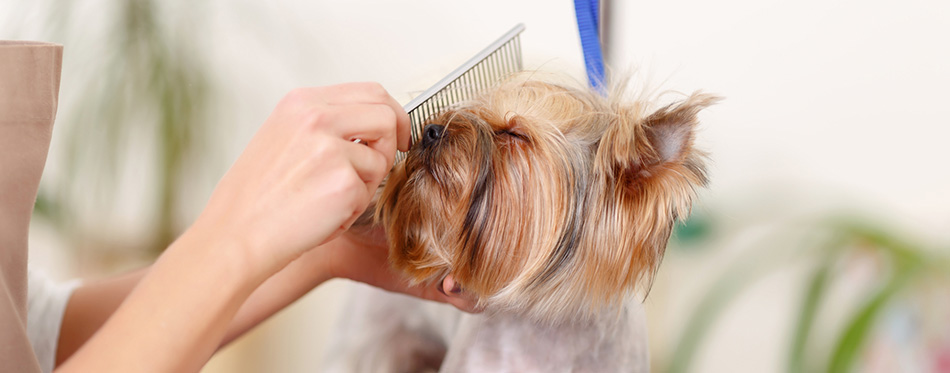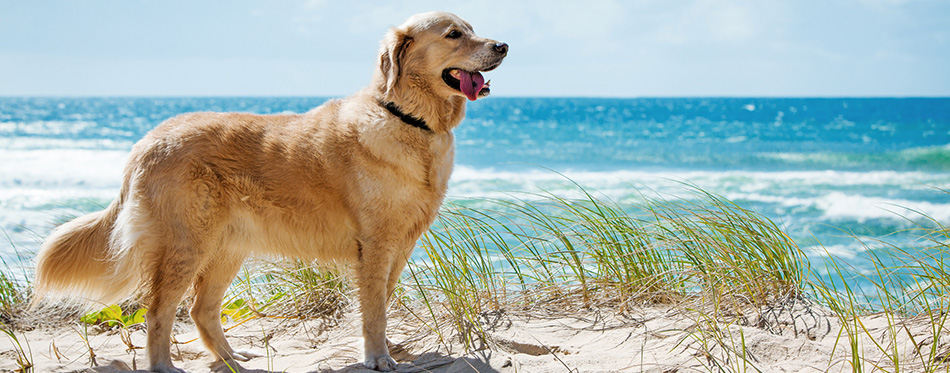One of the most common questions that pet parents have is how to get knots out of dog hair. For pet parents of short-haired breeds, this may not be an issue. But for parents of furbabies with long and dense coat, knots and tangles are commonplace. If one does not address these knots immediately, they can turn into something nastier – mats. Severe hair mats in dogs often require the clipping of the entire coat. You don’t want your dog to lose its silky smooth coat, do you? That’s why you have to learn how you can remove these tangles from your pet’s coat.
Prepare the Correct Unknotting Tools
Provided you are addressing simple knots and tangles on your dog’s coat, an ordinary dog brush should work fine. However, if the tangles are so stubborn that they already resemble mats, then you need more serious tools.
A deshedding brush is always an excellent choice when removing the knots from your dog’s coat. These combs often have stiffer bristles, allowing them to work against knotted hair strands. The added advantage is that you also get to remove dead and loose hair. This can help minimize the risk of knotted hair and tangles. Slicker brushes also work since they, too, have stiff bristles. These doggie brushes also have thinner tines so they can pass through the knotted strands a lot easier than conventional doggie brushes.
If the hair knots already border matted hair, you may want to use a dematting comb. These often come with attachments that can cut through the mats. There are also mat rakes which function like dematting combs. The only difference here is that their tines or teeth are sharper and stiffer than what dematting combs have. Your last resort is to have a mat splitter on hand. This is a special tool that looks like a razor that splits the matted hair into smaller, more manageable mats.

Prepare a Homemade Detangler or Purchase a Detangling Solution
One of the most important tools you can use in removing knots from your dog’s hair is a detangler. You can purchase one from your favorite pet store or pet supplies shop. You can also order one from online commerce platforms. These products are more like hair conditioners. They make the individual hair strands slicker or more slippery, so they are easy to unknot.
If you’re not a big fan of commercial products, then you can make your own detangling solution.
One of the more popular homemade detangler recipes for dogs is a rosemary-coconut oil solution. Boil about 4 cups of water and add 2 teaspoons of fresh or dried rosemary. Remove the pot from the heat to allow the herb to infuse into the water for 10 minutes. Strain the liquid to remove the rosemary bits. Pour the now-cool liquid into a spray bottle and add 5 drops of coconut oil. Some pet parents also add a teaspoon of aloe vera gel into the solution. Shake well and use it as a detangler.
A good alternative is to mix a teaspoon each of coconut oil and aloe vera gel. Pour this in a cup of water then add about 3 drops of glycerin. The last ingredient is what binds the rest of the components. This can make for a good detangler.
Identify the Areas that Need Unknotting or Detangling
Tangles or knots occur because of constant friction among the individual hair strands. These can occur in areas of the dog’s body that rub against each other. It can also occur in areas that can come in contact with other surfaces like the ground or the floor. It is important to identify the location of these knots so you can plan your next move.
Knots and tangles can form under or behind the ears of the dog. These may also be present along the hind legs of the dog as well as below its neck. Some dogs are more prone to having tangles on their belly and chest.
In determining the location of these knots and tangles, a slicker brush is almost always very helpful. Run the slicker brush along a certain part of your dog’s body. If there are no tangles, you could go from end to end without any resistance at all. If there is resistance to the smooth movement of the slicker brush, there’s a good chance you’ve hit a knot or a tangle. Make sure to run the slicker brush throughout the dog’s body so you won’t miss any area.
Use Your Fingers
Before you bring out the doggie brushes, you may want to start with your fingers. This should be easy since you have already established the location of the tangles. You can work your fingers, rubbing against these knots or tangles.
But first, you have to apply your chosen detangling solution. It is imperative that you apply the detangling solution only on the area with the knotted or tangled hair. It is also crucial to allow sufficient time for the detangler to work its way through the knotted hair. Three to five minutes should be fine. This is enough to let the detangler lessen the level of entanglement of the hairs. This will make it easier to remove the knots.
Removing the knots with your fingers can be a painstaking process. However, it does provide you with a few advantages. For starters, using your fingers lets your pet know that you care enough for it that you don’t mind employing a more hands-on approach. You will also have better control of the unknotting or the detangling process since you will feel the hair knots are getting undone.
To do this, it is important to rub your fingers sandwiching the hair strands in between. Be gentle. You don’t want the rubbing action to create more tangles than you already have at hand. Be systematic in removing the knots. Start at the section of the hair knot that is closest to the dog’s skin. Work your way outwards.
If the hair knots are not that severe, you should be able to unknot them in no time.
Use the Dog Brush
There will always be instances when the knotted hair is so stubborn that they are difficult to remove by hand. In such cases, you can start using the slicker brush. This is an excellent grooming tool for removing knots and tangles from your dog’s hair. The tool features very fine tines that can slip in between the individual strands of the knotted hair.
Sometimes a slicker brush is not effective in removing the tangled hair. What you can use is a deshedding brush. This is almost similar to a slicker brush except that its teeth or tines are stiffer. They still retain the thin profile of the individual tines, however. This makes it easy to insert through the knotted hair. And since the teeth are stiffer than those of a slicker brush, they should be able to move against the knotted hair.
When brushing your dog’s coat, it is crucial to follow the general direction of hair growth. This is to help prevent tugging on the hair roots which can weaken the integrity of pet hair. It is also important to brush only a few strands of pet hair at a time. It may take longer to finish the unknotting procedure, but it’s worth it. Brushing larger volumes of pet hair at a time can leave some of its hair still knotted or tangled.
If brushing doesn’t work, then you may be looking at matted hair in your pet. Hair mats are more difficult to work with. They may begin as knots and tangles, but they can solidify into a block of hair over time. This requires special tools such as a dematting brush, mat rake, and mat splitter. Of course, when all else fails, the dog grooming clipper is a must.
Click here and find out if there is a difference between dog hair and dog fur.

Give Fido a Good Bath
Pet parents who are learning how to get knots out of dog hair often neglect giving their pets a bath afterwards. This is to help provide additional protection for the dog’s hair. One should use a dog shampoo that comes with a special formulation for hair tangles. Many can contain natural conditioners. A much better product will be one that has essential fatty acids as these substances can help strengthen and protect the dog’s coat.
There is one thing that you should never forget before you give Fido a bath. It is important to be 100% certain that there are no more tangles or knotted hair on your dog before you give it a bath. Knotted hair has the tendency to act like a sponge that will soak in water. This can make the tangles worse, which can lead to the formation of hair mats.
It is equally important to dry your pet’s coat very well after bathing. This is to help prevent hair strands from sticking into each other. Brush or comb your dog’s coat only if its hair is already dry.
Removing knots out of dog hair is easy. You will only need the right tools for the job, plus a systematic approach to unknotting dog hair.
Dog bathtubs, dog dryers, medicated dog shampoos, dog conditioners, dog nail clippers, and other dog grooming guides may come in handy. Check them out!

